
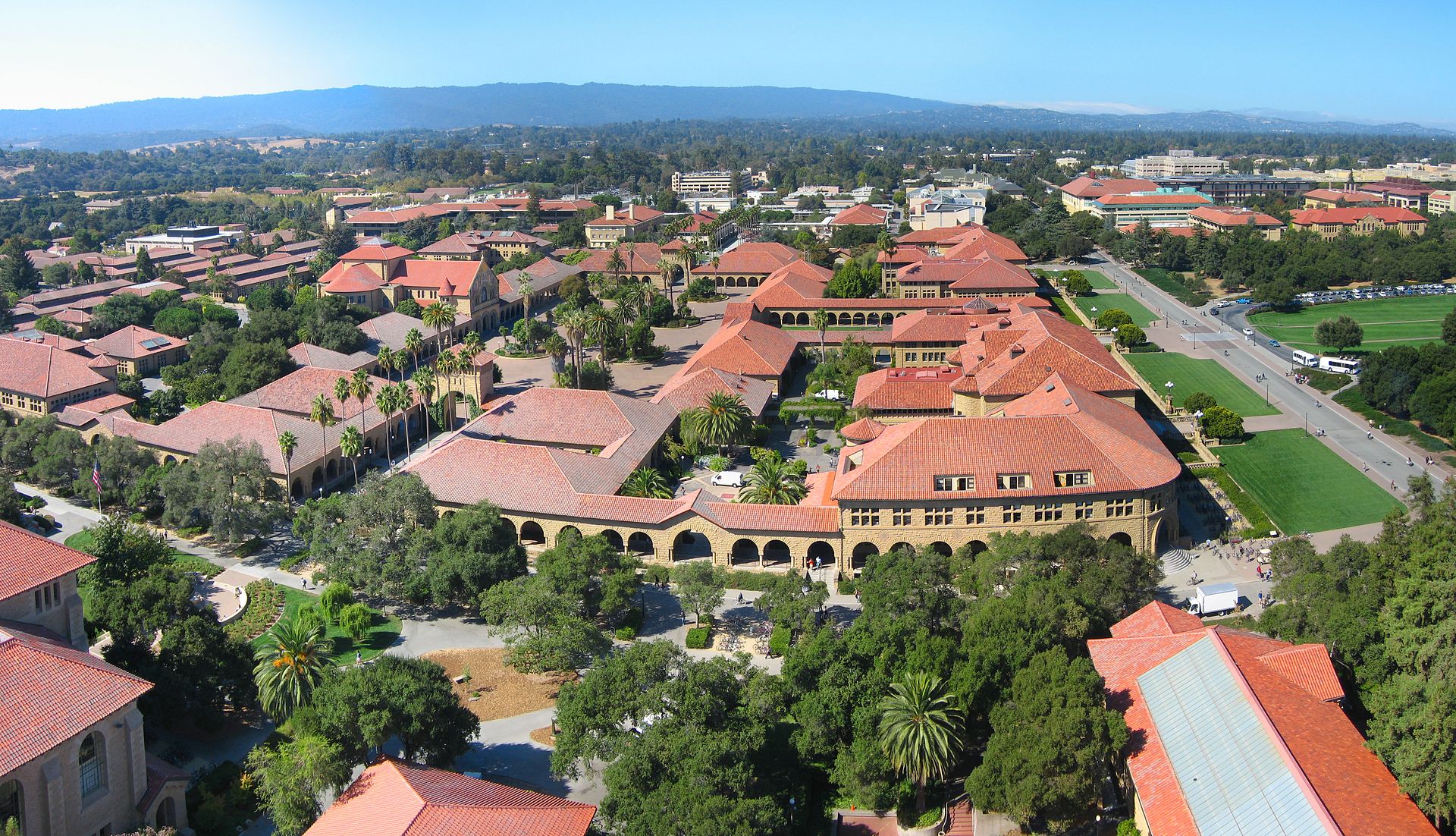
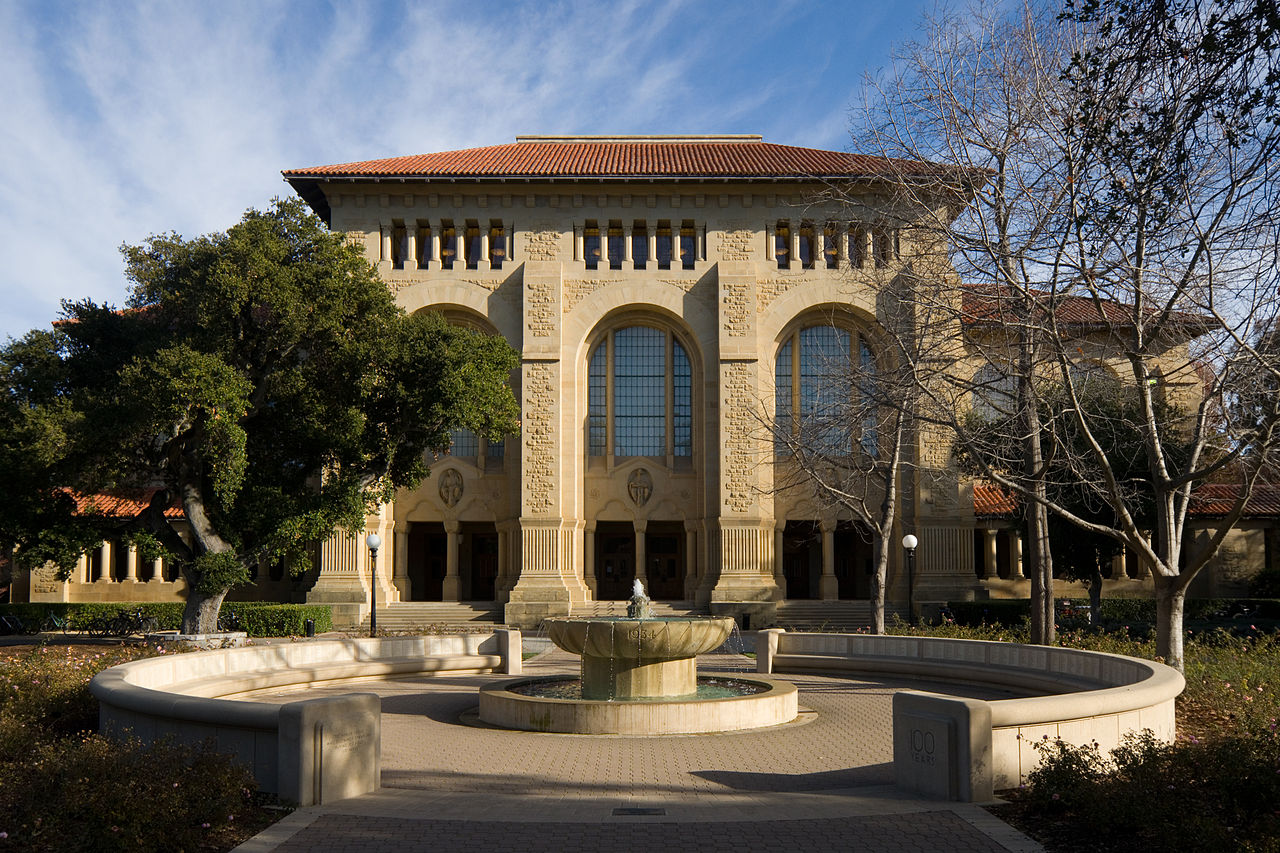
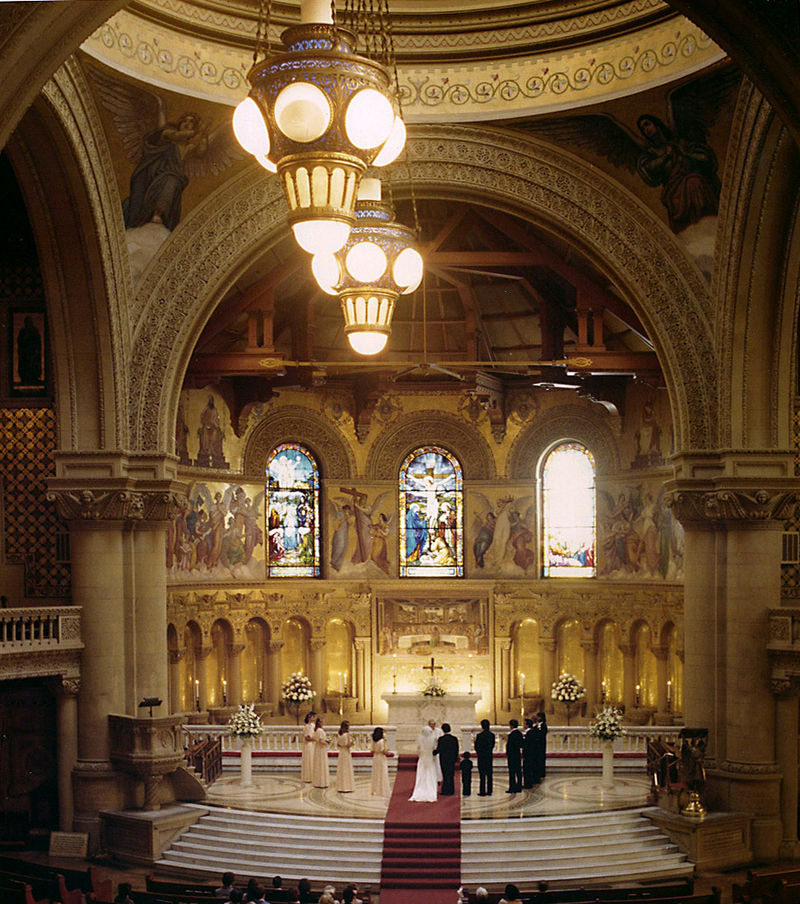
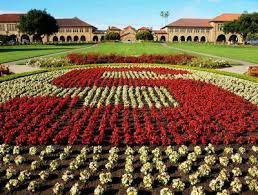


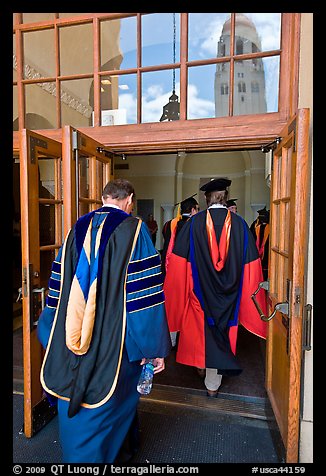
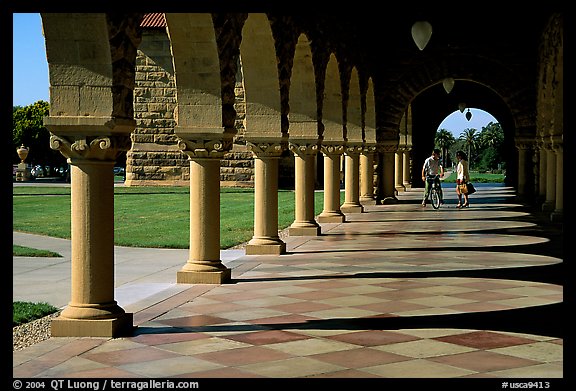

小利蘭·史丹佛大學,常直接稱為史丹佛大學(英文:Leland Stanford Junior University;俗稱:Stanford University),為一所坐落於美國加利福尼亞州史丹佛市的私立研究型大學。大學於1891年由時任加州參議員及州長的鐵路大亨利蘭·史丹佛和他的妻子簡·萊思羅普·史丹佛創辦。這是為了紀念他們因傷寒而於16歲生日前夕去世的兒子(小利蘭·史丹佛)。其為男女及宗教自由的學校,在1930年代前所有學費全免。
學校的校園位於矽谷的西北方,鄰近帕羅奧圖。] 校方的各個學術部門被歸入七所學術學院內,而包括生物保育區及加速實驗室在內的其他資產則設於主校區之外。 此校同時為最富有的教育機構之一,並為第一所在一年內獲得超過十億美元捐款升幅的大學。
史丹佛為一所擁有高住宿率及高選擇性的大學,當中的研究生課程較本科的多元化。該校也是馬丁路德金手寫原稿的保存地。] 其因學術聲譽而獲評為世上其中一所最著名的高等學府。 史丹佛學生透過36支代表隊參與不同的體育競賽,其為兩所太平洋十二校聯盟的私立大學之一
學校原始的「內方」建築物(1887-91年)是由建築師弗雷德里克·勞·奧姆斯特德、弗朗西斯·沃克亞瑪撒及利蘭本人所設計。校園建設的基石可追索至1887年5月14日,這天本應為小利蘭·史丹佛的19歲生日。校園整體的建築概念,採用了以半圓形拱門通道連接方形石制建築為特點的亨利·霍布森理查森式風格,並應史丹佛夫婦的要求,加入了加州使命復興式建築這些由紅磚及固態砂岩砌成的屋宇具有強烈的加州特色。史丹佛大學校園建築物在美國各大學的建築風格特異融合具有拉丁美洲西班牙殖民地時期修道院的四合院落是的建築物好像是莊園但又是學院般的莊嚴.
|
|
|
大學校曆採用季節制度。每年的秋季通常始於九月底,而春季則於六月初結束。
Stanford University (officially Leland Stanford Junior University) is a private research university in Stanford, California, and one of the world's most prestigious institutions with the highest undergraduate selectivity and the top position in numerous surveys and measures in the United States.
The Birth of the University
In 1876, former California Governor Leland Stanford purchased 650 acres of Rancho San Francisquito for a country home and began the development of his famous Palo Alto Stock Farm. He later bought adjoining properties totaling more than 8,000 acres.
The little town that was beginning to emerge near the land took the name Palo Alto (tall tree) after a giant California redwood on the bank of San Francisquito Creek. The tree itself is still there and would later become the university's symbol and centerpiece of its official seal.
Leland Stanford, who grew up and studied law in New York, moved West after the gold rush and, like many of his wealthy contemporaries, made his fortune in the railroads. He was a leader of the Republican Party, governor of California and later a U.S. senator. He and Jane had one son, who died of typhoid fever in 1884 when the family was traveling in Italy. Leland Jr. was just 15. Within weeks of his death, the Stanfords decided that, because they no longer could do anything for their own child, "the children of California shall be our children." They quickly set about to find a lasting way to memorialize their beloved son.
The Stanfords considered several possibilities – a university, a technical school, a museum. While on the East Coast, they visited Harvard, MIT, Cornell and Johns Hopkins to seek advice on starting a new university in California. (See note regarding accounts of the Stanfords visit with Harvard President Charles W. Eliot.) Ultimately, they decided to establish two institutions in Leland Junior's name - the University and a museum. From the outset they made some untraditional choices: the university would be coeducational, in a time when most were all-male; non-denominational, when most were associated with a religious organization; and avowedly practical, producing "cultured and useful citizens."

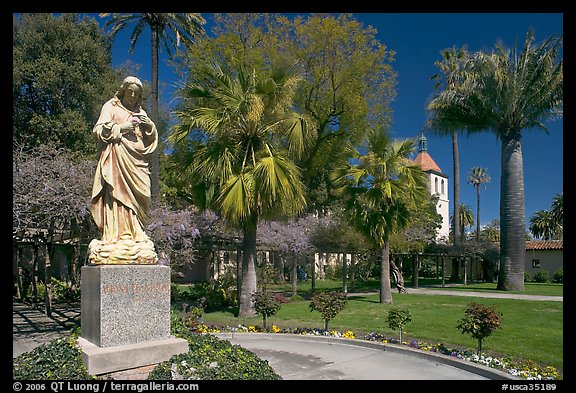
On October 1, 1891, Stanford University opened its doors after six years of planning and building. The prediction of a New York newspaper that Stanford professors would "lecture in marble halls to empty benches" was quickly disproved. The first student body consisted of 555 men and women, and the original faculty of 15 was expanded to 49 for the second year. The university’s first president was David Starr Jordan, a graduate of Cornell, who left his post as president of Indiana University to join the adventure out West.
The Stanfords engaged Frederick Law Olmsted, the famed landscape architect who created New York’s Central Park, to design the physical plan for the university. The collaboration was contentious, but finally resulted in an organization of quadrangles on an east-west axis. Today, as Stanford continues to expand, the university’s architects attempt to respect those original university plans.








